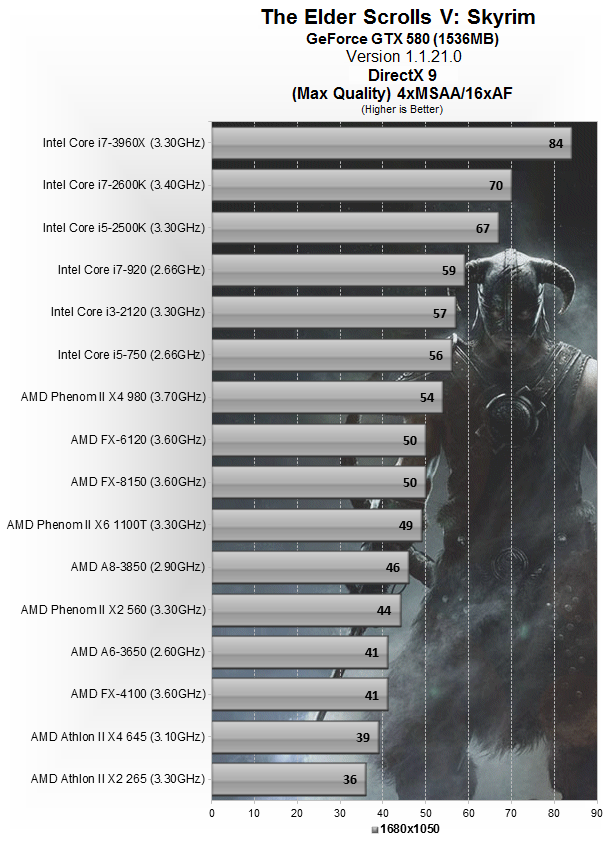I generally agree, but there are some odd outliers. Skyrim really loves six cores even at the highest details:
I suppose it might be caching, but really seems to love threads. Bizarre.
X2 3.3GHz = 44FPS
X4 3.7GHz = 54FPS
X6 3.3 (up to 3.7GHz with turbo) = 49FPS
the game doesn't seem to care for more core than maybe 3,
I think you shouldn't look at the i7 3xxx compared to the 2600k because there is simply to much difference, a lot more l3 cache, a lot more memory bandwidth and in this game maybe a higher clock with turbo to,
my experience with Skyrim was divided between 3 CPUs,
first an E5400 (2mb L2, 2 Cores) at 3.7GHz,
without the first patches the framerate was already OK at my settings (above 20 on the most intensive places but normally above 40), BUT the game had some terrible stuttering and freezes which as far as I know were only happening with dual core CPUs, there was an unofficial fix that worked (from enbdev.com), but it was later solved with the patches,
I tested some underclocking at 2.4GHz the game was still playable, with more than 20fps in Riften, and here is the funny thing, with a higher level of details (all at ultra, which is to much for my VGA) the experience was still smooth at this clock, with constant framerate, while at 3.7GHz it was awful, with a lot of variation, with the framerate jumping up and down all the time,
anyway, the 1.4 patch made the game a lot lighter, I stated seeing most of the time the framerate at 50fps or more, with the lowest going to the 30s...
I swapped this CPU with a Core 2 Quad 65nm at 2.85GHz, and performance decreased a little but stayed close enough, it was clear by looking at task manager that this game uses very little more than 2 cores....
going for a i3 2100 the framerate definitely improved, I guess the architecture improvements really can make up for the "missing" cores easily in this case (gaming), a lot faster memory/IO subsystem I guess...
but there are games that are far more successful at using "more threads" than Skyrim,
comparing the e54@3.75 to the C2Q@2.85GHz I saw a huge advantage on the C2Q at some games like Witcher 2 and GTA 4 things jumping from 20 to 30FPS basically (but the C2Q also had more L2 cache),
I think a dual core sandy bridge with HT at 4.5GHz would mostly make useless more cores for gaming right now... and I also think that this is the reason why intel only unlocks overclocking at their more expensive parts... so yes, the OP have a point I think... most users don't really need 4/6 cores, but could use 2 stronger cores,

